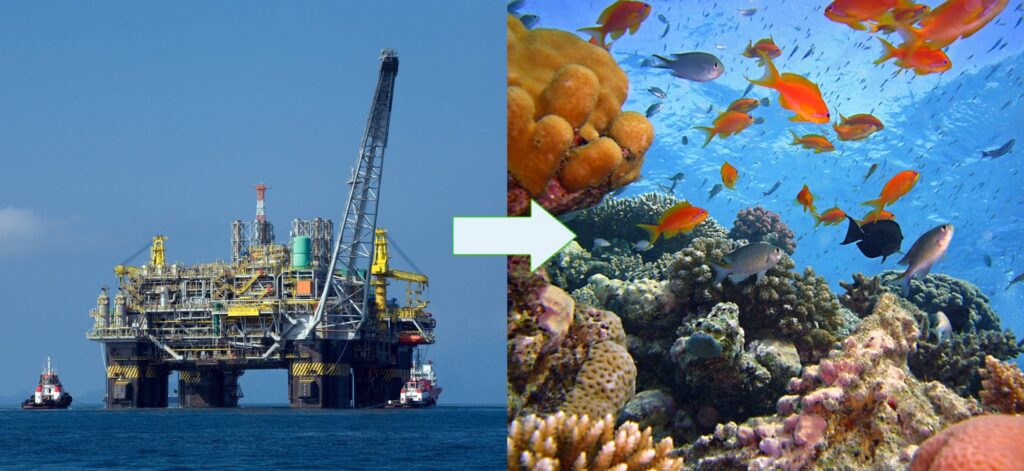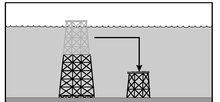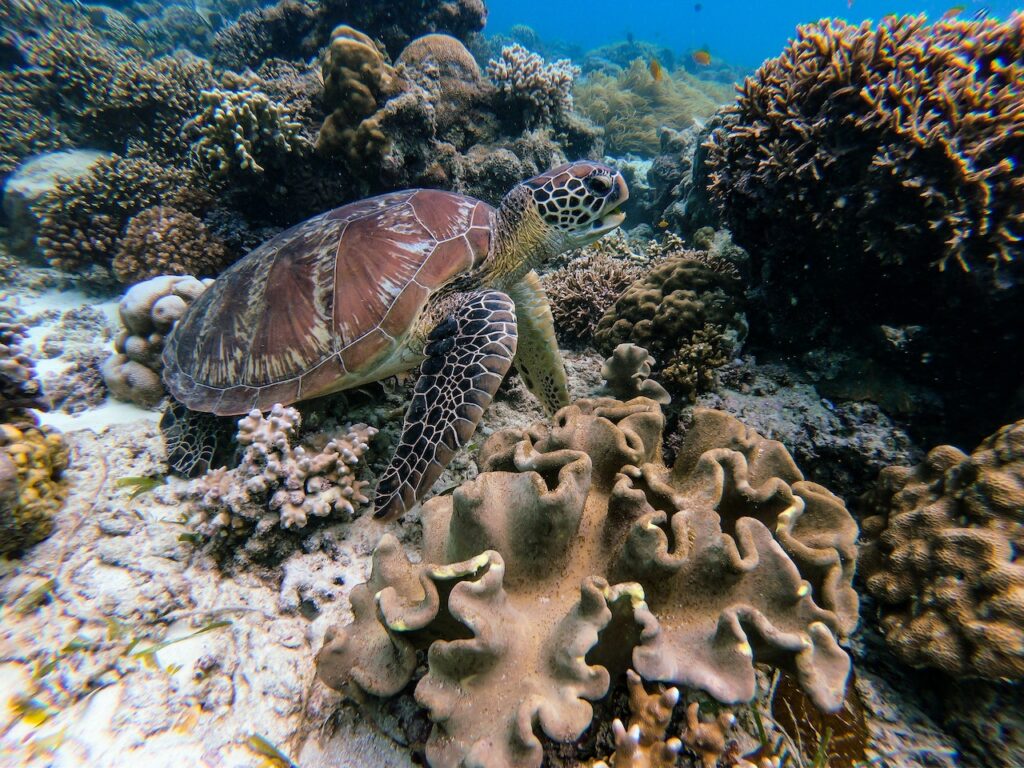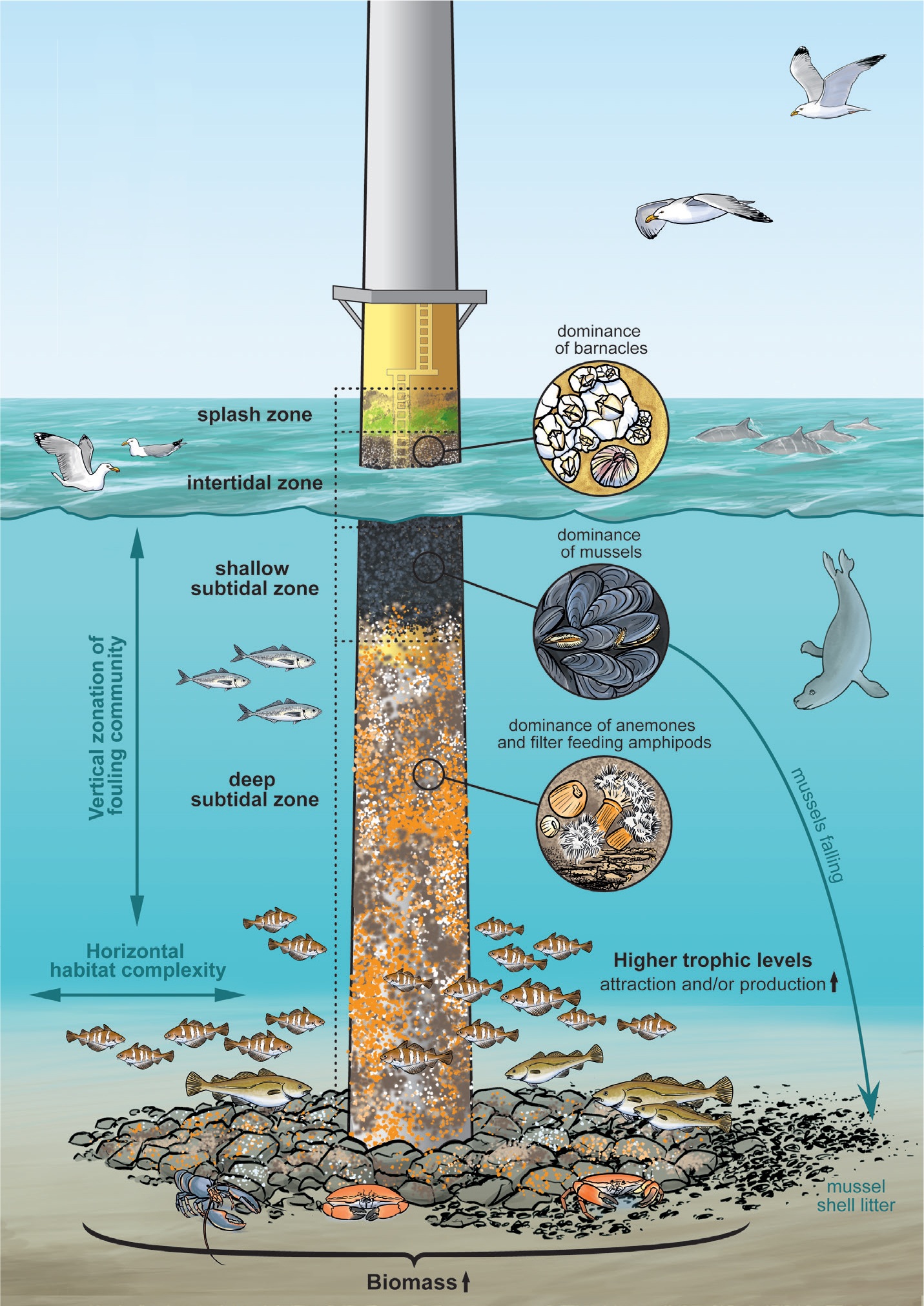Blog post:
This blog post was written for Blue Latitudes. The goal was to educate their potential clients about artificial reefs, as well as introduce their services. (Spec piece)
Artificial Reefs:
From Oil Rig to Fish Paradise?
September 22, 2023
By Eldar Iz

Oil rigs are enormous heaps of concrete and steel, weighing millions of pounds. Disposing of them at the end of their lifespan is a costly and complex procedure.
But can we repurpose these aging giants in some way?
Yes! Artificial reefs are a growing new movement. And they are changing the way we look at expired infrastructure.
Let’s dive into the details!
What is an artificial reef?
Artificial reefs are man-made structures. They’re placed on the ocean floor to attract fish and other marine life. Their purpose is to improve marine ecosystems and prevent the waste of valuable resources. In time, these repurposed structures become the foundations for brand-new reefs!
They can be made from used building materials, oil rigs, and even ships and airplanes.
Hard surfaces provide a place for algae and oysters to attach themselves. And spaces for fish to accumulate and hide from predators.
Artificial reefs also enhance human activities, like fishing and recreational diving.

How is it done?
There are many ways to repurpose offshore infrastructure as artificial reefs.
One common approach is to dismantle a platform where it stands and place the individual pieces on the ocean floor. Often only the upper part is removed. This is to avoid harming the animals and plants that already call these structures home.
Another approach is to tow a structure to a more appropriate reef site and sink it there.
In some cases, the structure may be modified before sinking.
For instance, holes may be drilled in a platform to create habitats for smaller sea creatures. Platforms may also be painted or decorated to make them more appealing to marine life.




The Benefits
Economic Benefits
Repurposing offshore infrastructure significantly reduces decommissioning costs when compared to traditional removal. Savings can be in the millions.
Artificial reefs can also create new opportunities for recreation and tourism. They attract anglers, divers, and other recreational users. There are thousands of shipwrecks worldwide that were sunk to create artificial reefs. They draw in countless tourist divers and generate profit for local communities.
They also improve fisheries and promote educational programs.
Environmental Benefits
Ordinarily, it takes a lot of resources to properly dispose of offshore infrastructure. Materials have to be dismantled, or cut into pieces, and then transported to shore.
But sinking structures where they stand dramatically cuts down transportation costs. This lowers carbon emissions and prevents valuable materials from ending up in landfills.
Natural reefs are sometimes called “the lungs of the ocean.” Artificial reefs can play the same role by absorbing carbon dioxide from the water. Increasing their biomass provides a new form of carbon storage (sequestration.)

Ecological benefits
Repurposing offshore infrastructure as artificial reefs can create new habitats for marine life. This promotes biodiversity and benefits marine ecosystems.
It often helps to introduce hard materials into muddy areas without solid surfaces. Because this provides sea creatures with shelter and a space to grow. Which is what happened in the RGV Reef in the Gulf of Mexico.
Artificial reefs can also be used to block illegal trawling. This fishing method involves dragging fishing nets behind one or more boats. Trawling can cause damage to sea beds. It also reduces populations of secondary sea creatures caught in the crossfire.
The Challenges
Cost
Repurposing offshore infrastructure as artificial reefs can be costly. The cost of towing, sinking, and modifying the platforms can be significant. But it is usually far cheaper than traditional removal.
Permitting
This involves various government agencies. The permitting process can be complex and time-consuming.
Companies like Blue Latitudes can help. As experts in the field, they help prepare environmental documents for permit compliance. These services often yield significant savings for clients.
Public opposition
Some people worry about the potential for pollution from leftover materials and toxins. Others argue that leaving debris in the ocean creates safety hazards for boats and fishermen.
Environmental
Ecological evaluations have to be carried out to assess every structure. It’s important to find out whether a structure will actually benefit local ecosystems. Artificial reefs can disrupt the balance of natural patterns of marine life. Experts are required to analyze the existing habitats and needs of local species.
Blue Latitudes provides complete evaluations of marine ecosystems. We can determine if a structure is a viable artificial reef candidate.
Case studies
There are many successful case studies of artificial reef projects.
One example is the Rigs-to-Reefs program in the Gulf of Mexico. This program has been underway for over 30 years. It has resulted in the sinking of over 500 offshore platforms.

Fun fact
The largest artificial reef in the world is the USS Oriskany aircraft carrier. It was sunk in the Gulf of Mexico in 2006.

The sinking was carefully planned and executed to minimize environmental impact.
The Oriskany was prepared for sinking by removing all hazardous materials such as fuel, oil, and asbestos. The ship was also inspected to ensure it was structurally sound.
The Oriskany was towed to the reef site and explosives were placed strategically throughout the ship. This ensured it would sink quickly and evenly. After detonating the explosives, the Oriskany sank to the bottom of the ocean in just 37 minutes.
The aircraft carrier is now on its final mission: providing a home to varieties of marine life. Resting at a depth of 212 feet, it has become a popular destination for divers and fishermen.
It has been nicknamed “The Great Carrier Reef.”
Conclusion
Repurposing offshore infrastructure as artificial reefs lowers the costs of decommissioning. It reduces environmental impact and creates new habitats for marine life. At the same time, it generates economic opportunities for tourism and fisheries.
But ongoing research is essential to unlock the full potential of artificial reefs.
Government, industry, and environmental professionals are all involved. They are encouraged to work together to further develop this fascinating new field. Clear and consistent regulations, as well as financial incentives, are needed.
And finally, the public needs to be educated about the important role of artificial reefs.
Sources:
- Artificial Reefs: Status, Life Cycle, and Environmental Impact Assessment (SpringerLink)
- Artificial Reefs – UF/IFAS Blogs (University of Florida Institute of Food and Agricultural Sciences)
- Artificial Reefs around the World: A Review of the State of the Art and a Meta-Analysis of Its Effectiveness for the Restoration of Marine Ecosystems (MDPI)
- Meta-Analysis Reveals Artificial Reefs Can Be Effective Tools for Fish Community Enhancement but Are Not One-Size-Fits-All (Frontiers in Marine Science)
- Artificial Reefs (Wikipedia)

100% Money-back Guarantee*
My intention is to partner with you for the long term. I’m confident that I can create written content that ticks all the right boxes.
I’m including a money-back guarantee to show that I am committed to seeing your projects through to the highest standard. If you’re not satisfied with my work, you can ask for a full refund.
*Guarantee details are outlined in the freelance contract.
